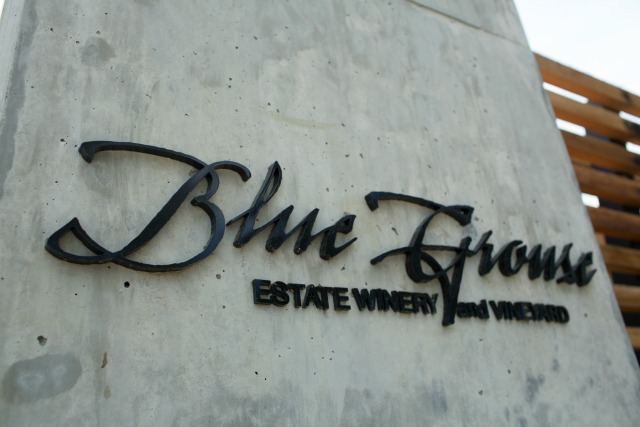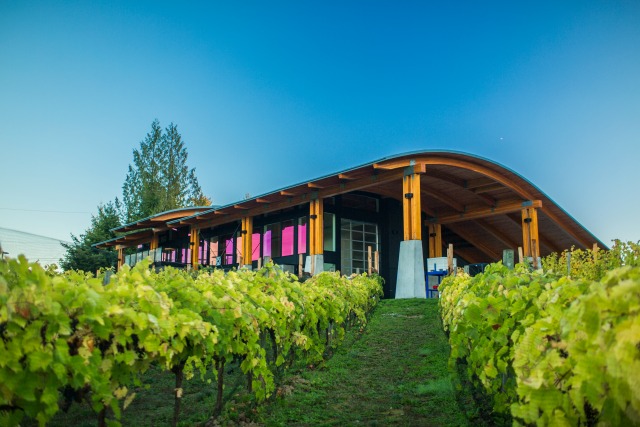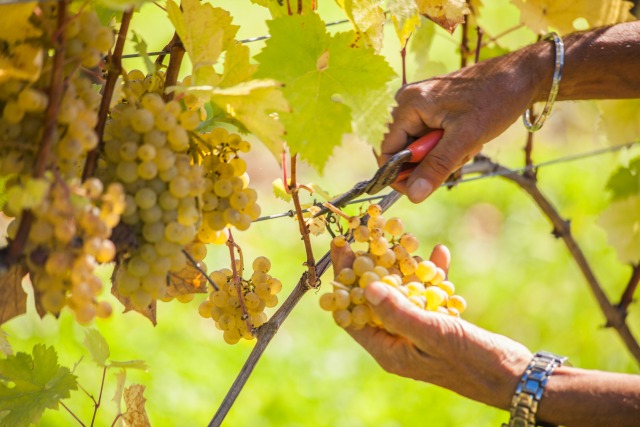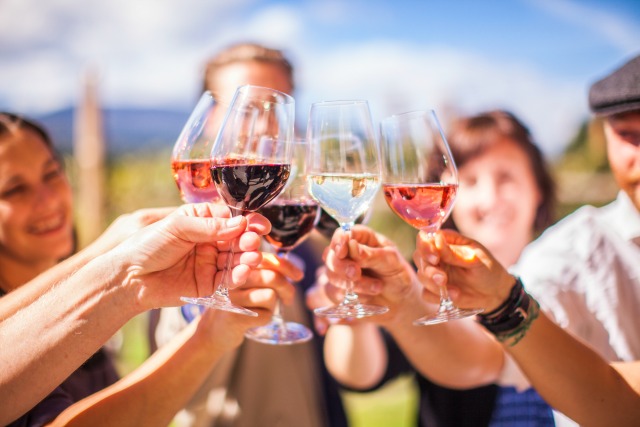This post is part of our ongoing series, Canadian Wine — specifically, Canadian wineries and the remarkable wines they produce. Today, Meaghan Carey takes us to Vancouver Island's Cowichan Valley, home to Canada's only maritime Mediterranean climatic zone and Blue Grouse Estate Winery and Vineyard.

The Cowichan Valley on Vancouver Island is a delightful community of passionate artisans and stewards of the environment; it's a community of engaged citizens who thrive in the beautiful location. The Cowichan Valley is also a burgeoning wine region in British Columbia and home to the hidden gem, Blue Grouse Estate Winery and Vineyard.
The original vineyard, on which Blue Grouse is located, was planted in 1977 by John Harper who was a pioneering Island viticulturist. Harper received funding from the Ministry of Agriculture to test grapevines on the seven-acre site. He planted approximately 150 different types of vines to see what would flourish in the damp, cool island climate. The vineyard is one of the oldest on Vancouver Island, with some of the original vine plantings still remaining today.
The Cowichan Valley is home to Canada's only maritime Mediterranean climatic zone, which means the region has temperate year-round temperatures influenced by the ocean airflow. The temperature and climate allow the valley to have Canada's longest growing season. The Valley offers a climate conducive to grape growing, but does present challenges for grape growers, such as potential storms from the ocean and high levels of precipitation in winter months.
Mother Nature is a fickle mistress and you won’t get the same results every year. You almost have to plan to be flexible. You have to be humble enough to learn and change.

In 1988, the vineyard was purchased by Hans Kiltz. In 1990 Kiltz released the first wines under the Blue Grouse label, making the winery the second oldest on the Island. Most of these wines were crafted from vines planted by Harper. The vineyard produced excellent examples of Ortega, Bacchus, and Siegerrebe grapes. Kiltz helped establish Ortega as the Cowichan’s flagship white grape, thereby playing an integral role in establishing the Cowichan Valley as a wine region in British Columbia.
Kiltz developed his small vineyard and winery over two decades, becoming well known on the Island and throughout British Columbia and respected for producing quality cool climate wines. Kiltz' dedication to perfection in his vineyard and winery was a key attraction for the current owners, the Brunners, who purchased Blue Grouse from the retiring Kiltz in 2012.

The Brunners are passionate wine lovers, but were not quite winemakers when they purchased Blue Grouse in 2012. Paul Brunner was a mining engineer and Cristina Brunner an artist. Together with their daughter, they've lived in various New World wine regions, such as Canada, Chile, Peru and the United States. To help establish and evolve Blue Grouse, the Brunners welcomed Bailey Williamson to manage the vineyard and lead their winemaking team.
Williamson has taken a unique path to becoming Head Winemaker at Blue Grouse. A Vancouver native, he graduated from culinary school, moving to Vancouver Island where he embraced the "farm to table" movement while working in various restaurants, including Sooke Harbour House, which was an early supporter of the quality Blue Grouse Wines. Developing a passion for wine during his time as a chef, Williamson moved to the Okanagan in 2001, working up from a cellar hand at wineries such as Sumac Ridge, Jackson-Triggs and Township 7, to Assistant Winemaker at Road 13 from 2006 until joining Blue Grouse in 2012.
Drawing on his culinary experience, Williamson’s approach to winemaking is more artistic than scientific. He adopts a critically minded, organic approach to craft wines that are true to the climate and soils of the Cowichan Valley. Williamson relies on his sense of flavour and knowledge of flavour development that he gained working as a chef to develop the wines he's seeking to produce.
The team at Blue Grouse are always pushing themselves to learn, to evolve and to experiment with the strong foundation bestowed to them by Harper and Kiltz.

There are currently six-and-a-half acres planted to vine, and there are another two acres set to be harvested for the first time in Fall 2017. Six additional acres were planted in 2016 to assist in expanding the production of the winery. The Blue Grouse label is crafted exclusively from the estate vineyard, which currently grows Pinot Noir, Pinot Gris, Ortega, Bacchus, Siegerrebe, Gamay Noir, Black Muscat, Pearl of Csaba and Müller-Thurgau.
Acknowledging the spacial limitations of the estate vineyard, and pursuing the desire to expand the production of the winery, a second label – Quill – was introduced in 2014. Quill was designed to allow Williamson to blend estate and non-estate grapes from Vancouver Island with specially selected grapes from trusted growers from the Okanagan Valley. Under the Blue Grouse Estate label, the winery produces approximately 1,800 cases a year, and 1,000 to 1,500 cases produced as the Quill label a year.

While the Brunners and Williamson have continued to evolve Blue Grouse, they've also done their best not to ignore the hard work that came before them. Within the new winery opened in 2015, they have graciously acknowledged Kiltz’s achievements by naming the mezzanine and balcony overlooking the vineyard in his honour as a tribute to his vision for not only the winery, but the entire Cowichan Valley.
The Brunners and Williamson have plans for continued expansion and evolution of the Blue Grouse brand, while remaining true to the ideals and principles of the vineyard and winery. This summer they welcome the opening of Grouse House, an exclusive Bed & Bottle retreat for wine lovers, exquisitely set within the heart of the historic estate vineyard.
Blue Grouse wines are available directly from the winery, and from select wine stores throughout British Columbia.
More Reading
- Canadian Wine: Niagara Region's Hidden Bench Winery
- Canadian Wine: Nova Scotia's Planters Ridge Winery
- Canadian Wine: Niagara's Pearl Morissette Wines
- Canadian Wine: Lightfoot & Wolfville Vineyards
- Canadian Wine: Norman Hardie Winery
Canadian Wine is written by Meaghan Carey. Meaghan shares her musings on life as she attempts to cook good food for family and friends from her small kitchen, on her blog Un Assaggio of Food, Wine and Marriage. Raised in Cape Breton, Meaghan returns home as much as possible and loves to welcome friends to this picturesque corner of Canada each summer. Connect with Meaghan on Facebook, Twitter and Instagram.








This is such a great overview of an awesome Island winery
Glad you enjoyed the article! So much love for this fantastic Island winery 🙂
One of my favourites. Fell in love with their Pinot Noir in 2007 and been a fan ever since. Great article!